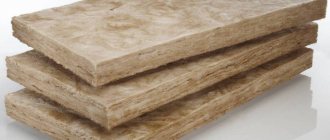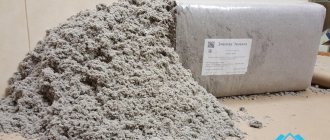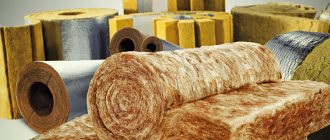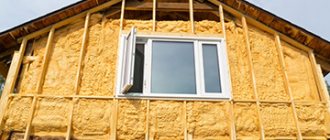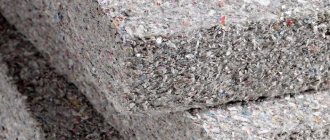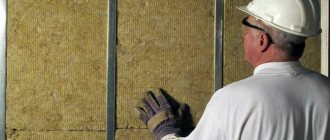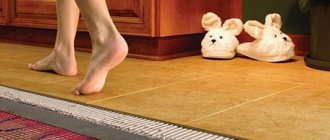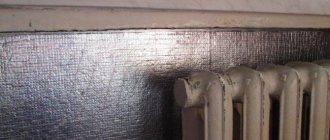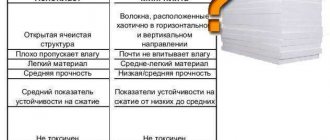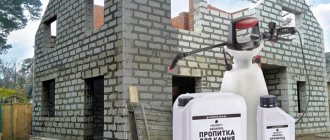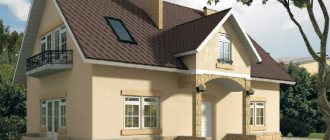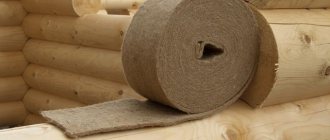Is penoplex suitable for insulating a wooden house?
Since ancient times, in order to insulate a wooden building, it was lined with brick. Such buildings can often be found in villages and holiday villages. However, old methods are being replaced by new technologies that allow for quick thermal insulation and the beginning of effective heat conservation. Today, it is increasingly practiced to insulate a wooden house with penoplex, which, however, does not in any way interfere with giving it a “traditional” look using facing bricks. What other options are there for using a material such as penoplex for a wooden house? In a wooden house, you can insulate the facade and interior walls, ceiling and floor with penoplex. You can read more about how to insulate the floor of a frame house with extruded polystyrene foam here. We'll tell you more about the rest below.
Insulation of a wooden house from the outside
Insulation of the outside walls of a wooden house with penoplex is carried out in compliance with certain rules. The structure itself is built on the principle of a ventilated facade. In addition, it is possible to use extruded polystyrene foam for stone cladding. This means that there must be a gap between the penoplex and the wooden wall of the house to ensure air flow. If this is not done and a wooden house is insulated directly along the walls with penoplex, moisture condensation and, as a result, the “start” of the rotting process can hardly be avoided.
- Insulation of a wooden house from the outside with penoplex begins with the installation of sheathing made of 50x50 mm wooden blocks.
- Insulation boards are laid in the sheathing. If the house is made of logs, then their unevenness will create conditions for ventilation. If it is a flat beam, then slats should be laid between it and the penoplex to create the necessary gap.
- The exterior finishing of a wooden house with penoplex is completed with cladding - siding, blockhouse or the all-familiar brick.
Particularly worth mentioning is frame houses. Along with the widespread use of mineral wool, penoplex for insulating a wooden frame house has also become widespread. At the same time, it can be mounted both outside and inside. Finishing the outside of a wooden house with penoplex is carried out using the technology already described, while the inside layer of insulation is usually covered with plasterboard, fiberboard or other materials for interior decoration.
Insulation of a wooden house from the inside
If insulating the facade of a wooden house with penoplex from the outside is impossible for some reason, then it costs nothing to transfer this process inside. The installation methods are the same here. As already mentioned, the internal insulation of the walls of a wooden house with penoplex is completed with a layer of plasterboard, lining, and decorative panels. The ventilation gap between the insulation and the wall is also important.
A good move to save heat would be not only the floor with extruded polystyrene foam, but also the ceiling and walls. In a wooden house, this material is quite acceptable for a wide variety of structures, as they say, from floor to ceiling. Its benefits are as follows:
- Small thickness saves space. For example, insulating a ceiling with sawdust requires a layer of at least 20 cm, while the thickness of extruded polystyrene foam requires much less.
- In cases where work can only be carried out from below, insulating the ceiling in a wooden house with penoplex foam can be a way out of the situation.
- Simple installation on the lathing does not require much effort.
Thermal insulation of the walls of a wooden house with penoplex is quite effective. True, many people use polystyrene foam and mineral wool for these purposes - the difference in price affects it. Extruded polystyrene foam is preferred by those who, firstly, cannot afford to lose extra centimeters of space (penoplex sheets are thinner than polystyrene foam with the same thermal conductivity, and even more so mineral wool), and secondly, pays fair tribute to the other properties of this excellent material (low vapor permeability, long service life). Insulation of the walls of a wooden house, including a frame one, with penoplex is possible outside and inside; it can also be used for thermal insulation of the foundation, floor, ceiling, roof. An important condition is the installation of ventilation gaps between the penoplex and the insulated wooden surface of the wall or floor. This must be remembered during installation.
How to insulate floors in a wooden house from below, depending on the type of foundation
How to insulate the floors in a wooden house from below, the choice of insulation depends on the type of foundation and floors of the first floor. For thermal insulation of the floors of the first floor of houses made of timber, logs, frame panels or other types of lumber, insulation materials that are moisture-resistant, possibly breathable and comply with sanitary and fire safety standards are used. They have the necessary characteristics:
Optimal results are achieved when placing the insulating layer at the bottom. With this design, the height of the ceilings inside the premises is not reduced, the lower crowns, ceilings and beams of the first floor are protected from freezing, and the dew point is shifted to the floor surface.
The latter makes it possible to reduce the risks of developing putrefactive processes to a minimum; with the correct laying of layers of insulating cake, the floors in a wooden house do not need to be updated for decades.
The choice of insulation depending on the type of foundation and floors of the first floor
The technology and materials of insulation primarily depend on the type of foundation of the house or bathhouse. In particular:
• Floors in buildings with hanging grillages of a pile or columnar foundation are insulated exclusively along the beams, using any breathable heat insulators, such as stone or mineral wool, including bulk materials, provided that double flooring is installed and the layer is protected from moisture, the accumulation of internal condensation and blowing out. With an unlimited budget and a high raised grillage, the simplest and fastest way to insulate them is to spray polyurethane foam between the beams.
• Wooden houses with strip foundations are insulated along the ground or along beams. In the first case, preference is given to compacted polystyrene foam or EPS, in the second - mineral wool, stone wool or bulk insulation (foam glass, closed polystyrene foam chips, ecowool, sawdust granules).
• Floors with foundations with a low or recessed grillage are insulated in the same way as strip structures.
• Slab types of foundations are, if possible, insulated with extruded polystyrene foam at the laying stage. Underfloor heating systems (water pipes or cables laid during the concreting stage) and rolled thermal insulation materials (cork, foamed polyethylene) also help to reduce the level of heat loss in such houses.
• Wooden houses with a crawl space are insulated from below using sprayed polyurethane foam, roll insulators, EPS or hydrophobized mineral wool. In such cases, slab materials are held in place by a counter-lattice.
Insulation with polystyrene foam
When insulating yourself, you need to know about the various nuances of using this type of material. You should also know how to choose the right foam.
Advantages and disadvantages
This insulation has both positive qualities and serious disadvantages. Among the advantages of using the material, the following properties can be particularly highlighted:
- It is relatively inexpensive.
- It has unique thermal insulation characteristics.
- Easily mounted on both horizontal and vertical surfaces.
- Does not allow moisture to pass through.
Disadvantages of the material:
- Ecologically imperfect.
- “Eats up” significant space during internal installation.
- Does not have great tensile strength.
Despite the presence of disadvantages, the material does an excellent job of protecting the frame structure from the negative effects of subzero temperatures.
Which material to choose
When insulating a frame house, you must use only high-quality material. If the foam has been lying in the open air for a long time, then it should be used for its intended purpose. If the material was produced in violation of technology, then in this case it is also necessary to refuse the purchase.
Attention! If the material crumbles or has uneven thickness, then the use of such insulation will not have the best effect on the quality of thermal insulation work.
The type of foam will also depend on where the insulation is installed. For internal use, it is necessary to use sheets of optimal thickness so that the free space of the room is reduced slightly. For outdoor work, it is necessary to use special foam plastic boards that will withstand large temperature fluctuations well.
Installation of insulation
So, when the choice in favor of one or another insulator has already been made, the following questions arise: how to insulate a frame house with foam plastic or penoplex? How to correctly install insulation?
When insulating frame walls with polystyrene foam, first of all, it is necessary to take into account such a parameter as the thickness of the insulation, which is selected taking into account the thickness of the main wall, average temperature and humidity in the region and some other nuances.
It is especially preferable to use polystyrene foam as insulation for a frame house on the outside, given the fact that mineral wool, with its low moisture resistance, is much less suitable for this and is used more for internal insulation of walls.
Expanded polystyrene boards are mounted on the wall in several different ways, namely:
- Using special glue for polystyrene foam. There are two types of such glue: in the form of a dry mixture and in the form of foam. Dry adhesive, similar in appearance to tile adhesives, is diluted with water (according to the instructions) and then applied to the wall. Foam adhesive is similar to regular polyurethane foam and is usually used for smooth walls. This glue is applied using a regular foam gun. When insulating frame walls with polystyrene foam, you must be extremely careful, since this material is quite fragile and the edges of the slabs break off easily. If you plan to further plaster the walls, then during installation it is preferable to apply the adhesive not in slaps or strips, but rather distribute it over the entire joining surface of the polystyrene foam board.
- Using fasteners (“fungi”). To install slabs when insulating the walls of a frame house with polystyrene foam, fastening elements are used, which are ordinary dowel-nails for concrete, but with a special cap that holds the foam plastic in the frame wall. Made of plastic, such “fungi” are not subject to corrosion and eliminate the formation of cold bridges.
Installation of polystyrene foam in a frame house using “fungi” is reliable and quite simple. The steps are as follows:
- Holes are made in the wall corresponding to the thickness and length of the “fungi”.
- Apply a sheet of polystyrene foam.
- The plastic part of the “fungus” is inserted, and then the special nail that comes with the “fungus” is hammered in, thereby pushing apart its part located in the concrete
- Using a frame. When insulating a frame house with penoplex and polystyrene foam, an additional wooden frame is sometimes used, which is a lattice or strips that are attached to the wall, after which insulation is attached inside the frame itself.
It would be fair to note that this installation method is good only in cases where, after insulating the frame with foam plastic, further finishing of the walls is planned with a material that will be attached to the wooden slats themselves.
Otherwise, due to the same thickness of the slats and polystyrene foam, insulation in a frame house may turn out to be ineffective, since unique cold bridges will form.
For better fastening of slabs to the wall when insulating a frame house with polystyrene foam, several options for fastening polystyrene foam can be used simultaneously. In a frame house, for example, there is a frame and “fungi” or “fungi” and glue.
Regardless of what material you prefer to use for thermal insulation: polystyrene foam or polystyrene foam, your frame house will be warm and cozy. And by insulating a frame house with polystyrene foam yourself, you can also save a lot of money.
See more on this topic on our website:
- How to insulate a timber house from the outside with polystyrene foam and polystyrene foam After building a house made of timber, many people are faced with the question of how much its walls can save heat, because in our harsh winter conditions this is...
- Insulation of a frame house from the outside with environmentally friendly insulation Since insulation of a frame house from the outside is a task of paramount importance during the construction process, it is recommended to approach the choice of a heat insulator with particular seriousness. In addition to these characteristics,…
- Do-it-yourself insulation of the walls of a frame house from the inside Manufacturers of SIP panels and people who understand how the walls of a frame house are insulated say that well-installed walls can fully replace a half-meter…
- Insulating a wooden house from the outside with polystyrene foam. The effectiveness of external insulation of a wooden house equally depends on the correctness of the chosen thermal insulation material and on the correctness of the installation. One of the most widely used…
- Insulation for a frame house - reviews and which one to choose If you are planning to build a frame house, then, in all likelihood, you are asking yourself the question: “What material is best to use for its thermal insulation?” Choosing insulation for frame…
Technology of insulating facade walls with Penoplex
To properly insulate the facade with penoplex, compliance with the installation technology is required. The necessary tools are pre-selected and the base is prepared.
Preparatory stage
According to the technology of penoplex insulation, the preparation stage is the first, and this procedure concerns not only the surface of the wall, but also the insulator itself.
Preparation of materials
To insulate a house with penoplex, the material needs to be prepared. The surface of the slabs should be slightly rough. To do this, polystyrene foam is processed with a needle roller. If it is not available, a stationery knife is suitable, which makes small notches.
Preparing the walls
Before insulating a wall with penoplex, it also needs to be prepared. It is cleaned of dust, old finishes, grease stains, and weak areas of plaster. If there is fungus or mold on the surface, they must be removed and the base treated with fungicides and antibacterial agents. Protrusions on the wall or remnants of masonry material are knocked down to the general level.
Cracks of any size are cleaned, treated with a priming liquid, and then covered with a repair compound. As for wooden walls, it is necessary to completely eliminate damaged areas, which are treated with antiseptics. The cracks between the logs need to be caulked.
After cleaning, the vertical and horizontal level of the base is checked. If the differences are significant, the problem needs to be corrected. For this, a solution based on cement and sand is used. All metal structures are treated with a special anti-corrosion compound. You can begin attaching the thermal insulation a month after the preparatory procedures.
Marking the zero line and setting the starting profile
Before insulating walls with penoplex, you need to mark the location of the lowest row of sheets. For this, a laser or water level is used. The material must be attached so that it is 30 cm below the floor level of the first floor. This way you can avoid the appearance of dampness in the room. The markings are carried out in such a way that there are no even minimal errors that could lead to significant distortion of the slabs in the upper part of the wall.
The starting profile is attached along the perimeter of the building (below the highest point of the building foundation). The clamps are mounted every 30-50 cm. At the points of contact with the base, the elements must fit tightly to it. If there are even small gaps, they can be eliminated using spacer washers. To connect adjacent profile elements on a straight wall, special fasteners are used. In addition, there must be a gap of 3 mm between them.
Preparing and cutting penoplex boards
The insulation of the wall is carried out after adjusting the foam boards. At the corners, the sheets are mounted with a toothed lock. To do this, the fragments through the row are shifted outward at a distance slightly greater than the thickness of the material. All pieces that border the profile should not be narrower than 20 cm.
In the area of window and door openings, you need to use elements cut in the shape of the letter “L”. In this case, it is important to leave an allowance inward for proper joining with the slope insulation. For cutting slabs, heated wire (nichrome), a hacksaw with fine teeth, and a stationery knife are used.
Preparation of adhesive composition and installation of insulation boards
To insulate walls with penoplex from the outside, special glue is used, which is prepared immediately before starting work. Preparation of the mixture and fastening of the material is carried out according to the following instructions:
- The glue must be mixed in accordance with the proportions and in the sequence indicated on the package. The first stage lasts 5 minutes, after which the composition should stand for 10 minutes. Next, it is kneaded again for 5 minutes. The product must be used within 2 hours. The glue must be used at a temperature of at least +5 degrees.
- Glue is applied along the perimeter of the slabs in a strip of 10 cm. The maximum layer thickness is 2.5 cm. The sheet must be filled to 40% of the entire area.
- The first row is laid on the starting profile so that the edge of the material rests tightly against the limiting edge and does not extend beyond it.
- After applying the glue, each fragment is pressed tightly to the base. Excess mixture is removed immediately. In this case, you need to constantly monitor the horizontal and vertical levels. You can adjust the position of the plates by tapping with a grater.
- 3 days after laying the panels, they are additionally secured with “fungi” dowels.
Since when using penoplex to insulate walls, gaps may remain between the slabs, which are filled with polyurethane foam-based polyurethane foam.
Creation of a reinforced protective plaster layer
After installing the insulation, it is covered with plaster reinforced with fiberglass reinforcing mesh. Its specific density is 140-160 g/m2. The insulated facade is plastered with the same compound on which the slabs were attached, but its consistency should be more liquid.
Strips of mesh, 30 cm wide and 1 m long, must be fastened starting from the corners and slopes. Next, an adhesive composition is applied to it. The layer thickness is 0.2 cm. After this, a metal corner is mounted. The mesh must be completely hidden in the plaster. There is no need to make the stripes too long. Adjacent elements must be overlapped by up to 10 cm.
After the solution has hardened, it is grouted. Next, a leveling layer of adhesive plaster is applied. Its thickness is 4-5 mm. After hardening, the surface is thoroughly rubbed.
Decorative finishing
When insulating walls from the outside with penoplex with siding, you will have to make wooden or metal sheathing. It is attached directly to the insulation using dowels or long screws. The sheathing must be fixed firmly, but the insulation must not be allowed to crumple. Sometimes another method of forming a frame is used: fixing the brackets to the base before laying the insulation. It is on them that the sheathing will be fixed.
There must be a ventilation gap 2 cm wide between the siding and the penoplex. In this case, there is no need to use a vapor barrier. Another finishing method is decorative plaster.
Installation work
To equip walls made of foam plastic, foam boards with a thickness of 50-150 mm are usually used. The use of thinner sheets is not advisable; they will not give much effect. All work consists of performing the following steps:
insulation of the facade with polystyrene foam boards
- preparatory work. The surface of the walls must be cleaned of dirt and leveled, avoiding differences in height of more than 2 cm. To eliminate cracks and chips, putty is used, then the entire surface is primed;
- every 0.5 m, vertical plumbs are set and sheets of foam are applied, controlling the uniformity of fit;
- Before gluing the foam to the wall, use a building level to mark a line to secure the profile strip. It is necessary to support the foam sheets after gluing in their original state, and prevents the sheets from moving before the glue dries;
- After fixing the planks, they begin to install the sheets; for this, a layer of glue is applied to each sheet around the perimeter and in the center. Any tile adhesive, silicone sealant, or liquid nails can be used as an adhesive for foam plastic. There are also special compositions for cement-based foam. In construction stores you can also purchase aerosol polyurethane glue, which is inserted into a mounting gun and is capable of gluing up to 10 sheets of foam plastic;
- the sheets are applied to the prepared wall and carefully pressed, applying a level to the surface. Lay the sheets in rows from bottom to top, shifting each next row by half a sheet. In this case, the joints of the rows should form the letter “t” and fit as tightly as possible to each other;
- To seal the seams, special foam for polystyrene foam or polyurethane foam for installation work is used. After the foam has dried, the protruding parts are cut off flush with the level of the insulation with a utility knife;
- The complete drying time for the glue is three days. After the glue has set, additional fixation of the sheets is performed using plastic dowels, which are not bridges for the passage of cold. Fasteners are made every 30-50 cm, and the dowels must have special washers at the ends;
- It is impossible to secure the sheets with dowels until the glue dries, this can lead to the glue coming off the wall surface and the foam peeling off;
- After installation, the dowels are covered with a layer of adhesive-based primer;
- A fiberglass mesh is fixed over the entire surface of the foam wall;
- a layer of acrylic plaster is applied on top of the mesh;
- Then the surface is painted or subjected to decorative finishing.
Video on installing polystyrene foam on a brick wall:
Insulation of the foundation with penoplex
Proper insulation of a future home must begin from the foundation; this will make it possible to avoid the creation of cold bridges and protect against signs of frost heaving. The use of penoplex as insulation will act as protection against groundwater by creating excellent drainage, which will allow:
- form a reliable waterproofing layer;
- prevent water from entering the basement, which will prevent the foundation from collapsing;
- reduce groundwater pressure on the foundation.
Roof insulation with penoplex
Protection and insulation of the house from the cold will not be complete if the roof is not insulated, through which warm air rises and easily evaporates. Reliable roof insulation has a number of advantages:
- the slabs are mounted reliably and easily due to the specially L-shaped edge;
- the possibility of creating a continuous layer of thermal insulation;
- creation of a hard, light, reliable insulating layer;
- comprehensive insulation of the house (including the roof) will allow it to withstand decent mechanical loads for a long period.
How to insulate a wooden floor
Thermal insulation of a wooden floor with penoplex is usually carried out along the joists. Warming is carried out in the following order:
- Installation of rough ceiling.
- Laying a waterproofing layer.
- Installation of foam boards.
- Fixing the insulation with self-tapping screws.
- Filling gaps between slabs with foam.
- Laying vapor barrier film.
- Laying the finished floor on beams.
- Installation of finishing coating.
The technology for insulating the floor in a wooden house from below along joists, as well as the rules for installing insulation under a concrete base, are described in more detail in the article “How to properly insulate the floor from below - rules and nuances.”
Penoplex is different in that it can be laid directly on open, dry and well-compacted soil. This insulation option is usually used under a concrete screed.
In this case, the following installation scheme is used:
- A 30 cm layer of compacted crushed stone is laid below.
- Next comes a layer of sand, compacted to a thickness of 10 cm.
- Then lay penoplex 100 mm thick (thinner sheets can be laid in two layers perpendicular to each other). The plates are glued together with special metallized tape.
- Next, a waterproof film is laid.
- A fiberglass mesh is laid on top.
- A 5 cm thick screed is poured on top.
The main stages of laying insulation
The best installation option is to lay the floor insulation along the joists.
These cross boards are used for subsequent flooring. Logs for laying floor insulation
Main stages of work:
- The logs are installed on the finished foundation. The recommended distance between the bars is no more than 1-1.2 m;
- after this, thick plywood or chipboard sheets are installed. They are secured with self-tapping screws. This is how the base is prepared for laying the heat-insulating layer;
- Insulation is laid between the wooden joists. Depending on the material used, the thickness of this layer may vary. In any case, it should not exceed the size of the logs themselves;
- Next, a layer of waterproofing is laid. Although this step is recommended by experts for maximum results, it can be skipped. This is due to the resistance of some materials to moisture;
- Now you can lay the flooring. It may be old. Or it can be replaced with a new one.
Compliance with the specified sequence will allow you to insulate a wooden floor with penoplex or other insulation.
Insulation is placed between the joists
Features of sawdust insulation
Insulating the floor with sawdust is an environmentally friendly and affordable way to keep the house warm. When choosing this insulation, you must adhere to a number of recommendations:
- Broken glass should be added to the prepared mixture of sawdust and cement or clay. This will prevent rodents from appearing. Do not forget about the use of special solutions;
- the mixture consists of five parts sawdust, one part cement (clay) and half water. This proportion must be observed. When mixing a steeper solution, you will get durable insulation, but with a low thermal conductivity coefficient;
- carefully fill the voids between the joists. This will allow you to get an even layer of insulation. If you do not maintain this technology, the thermal insulation will be “leaky” and the floor will remain cold.
When insulating the floor with sawdust, you can save a lot
Features of penoplex insulation
Due to its high strength and affordable cost, floor insulation with penoplex in a wooden house is more common than other materials.
Among the installation features of this insulation, we note the following points:
- penoplex is laid between the joists and attached to the floor from below with assembly glue;
- It is necessary to accurately and tightly fit the edges of the slabs. This will prevent cold air from entering;
- the joints are additionally glued for maximum adhesion;
Penoplex must be secured with mounting adhesive
laying a waterproofing layer is required
This is especially important for a private house or cottage in a swampy area; Before laying penoplex, wooden beams and crossbars are treated with a special solution. This will avoid rotting and the appearance of bugs.
Due to its light weight, penoplex is excellent for insulating floors in a frame house. The load on the foundation of the building will be minimal. This will prevent the house from shrinking over time.
The main points of insulation with expanded clay
This insulation is installed according to the technology described above. However, there are a number of features that you need to know. To insulate the floor in a wooden house with expanded clay, you must:
- be sure to lay a cushion of sand. It is poured in an even layer and compacted thoroughly;
- A layer of liquid mastic is applied on top of this pillow. It plays the role of waterproofing;
It is necessary to put a metal mesh on the expanded clay for leveling
- Now expanded clay is poured. To ensure that the layer is as even as possible and without voids, it is recommended to use a material of different fractions. This will allow the granules to fit more tightly to each other;
- a vapor barrier is required. Only after this can the main floor covering be laid.
Due to the noticeable weight of this material, insulating a wooden floor with expanded clay is best done with a solid foundation.
Tips for quality insulation
- During the construction of a house, insulation slabs are strengthened over the rafters, which will create a leak-free insulation layer;
- If repair work is being carried out on an already finished building, the option of fastening from the inside is allowed, and additional thermal insulation of the attic will further improve the thermal insulation characteristics;
- The installation process occurs by attaching it to the sheathing with ordinary nails and does not require much labor;
Choosing penoplex as the main insulation will reliably protect your building not only from cold weather. It is safe because it does not contain various resins, dust, and is environmentally friendly.
Reliable roof with Penoplex Roofing
The frame house created using penoplex must provide the required level of thermal protection. To do this, it is necessary to insulate the roof using specially developed Penoplex Roofing. Among the advantages inherent in this method of increasing the heat-saving properties of house construction, the following should be highlighted:
- a light and rigid insulating layer is created;
- the use of modern penoplex insulation makes it possible to create a continuous thermal insulation layer;
- Penoplex slabs with a special L-shaped edge are easy and reliable to install;
- If the roof, like the entire frame house, is insulated with penoplex, this allows you to create an effective hydro- and thermal insulation layer that can withstand heavy mechanical loads and does not require repairs for a long time.
Professional advice on insulating a frame house with penoplex, in particular the roof, requires the following procedure:
- When building a house, the insulation boards are reinforced on top of the rafters, which allows you to create an insulation layer without any gaps.
- Installation is carried out with simple nails to the sheathing and is not difficult.
- The choice of the thickness of the insulating layer is carried out in accordance with the standards adopted in the region (you can use the free mobile application “PENOPLEX School of House Construction”, which allows you to quickly calculate the required amount of insulation depending on the climatic conditions of the region of residence).
Existing tips for insulating a frame house with penoplex allow you to insulate the roof not only of a house under construction. When carrying out repair work, insulation boards can be strengthened to the rafters and from the inside. If roof insulation is not possible, there is an excellent alternative. If the attic floor of a frame house is insulated with penoplex, this significantly increases the thermal protection of the interior, creating comfort and coziness in the house.
As advised by professionals who have repeatedly insulated frame houses with Penoplex, Penoplex Comfort can be used for private housing construction. This brand of insulation was created specifically for individual house construction and is suitable for all types of work - from the foundation to the roof.
Advantages
Expanded polystyrene as insulation for walls, floors, and roofs is very popular among owners of frame houses. This is due to a number of its advantages compared to other heat-insulating materials:
- moisture resistance (can be used to insulate foundations and basements where there is direct contact with water);
- fire safety (modern foam plastic does not support the combustion process);
- not subject to rotting;
- low cost;
- light weight;
- low level of thermal conductivity;
- environmental friendliness (does not emit toxins during installation and operation);
- ease of installation.
This heat-insulating material is not afraid of temperature changes. Foam insulation creates an additional soundproofing layer. Over time, its slabs do not shrink and do not change their geometric parameters.
Due to its many advantages, this material has been used in construction for more than 40 years. More than 60% of all expanded polystyrene produced in Europe is used to insulate houses.
Flaws
Polystyrene foam cannot come into contact with organic solvents (acetone, turpentine), saturated hydrocarbons (alcohol) and petroleum products (kerosene, gasoline and others): under their influence it is damaged or dissolved.
With prolonged exposure to ultraviolet radiation, the material may begin to deteriorate, so it is always covered during storage.
Briefly about the pros and cons
Having determined polystyrene foam as insulation, you need to carefully weigh its positive and negative sides.
Among the positive qualities, we can highlight excellent thermal insulation, which is represented by the following figures: 0.036-0.044 W/K*m. This material performs the function of a thermos.
This material has amazing moisture-resistant qualities and waterproofing characteristics.
Insulating a frame house with polystyrene foam, as consumer reviews show, gives the room the highest class of noise absorption.
High temperatures are not dangerous for this material (it can easily tolerate 1000 C), thanks to this the slabs do not deform and sit tightly in the established place, which significantly increases service life.
Environmental friendliness is also a significant plus; this type of insulation is hypoallergenic, odorless and does not emit toxins.
Installation of this insulation is extremely simple and can be easily done by one person.
Negative qualities include the following: vapor permeability, because of this moisture does not pass through the insulation and accumulates in the walls, which will subsequently lead to rotting. This can be avoided by installing high-quality exhaust ventilation.
High flammability indicators; if the material is made poorly, then it is quite flammable.
This insulation provokes the appearance of rodents in the walls, since the latter love to make nests in it.
Insulation of external walls with penoplex with siding
Carrying out work on insulating external walls must follow certain rules:
- First. Preliminary preparatory work on the surface must be carried out; the wall must be free of flaws and treated with antifungal agents;
- The second step is the installation of the base profile on which the penoplex will be installed. These manipulations are necessary for an even layer of future insulation, this will provide additional protection from harmful factors.
- The next step is to install the foam boards so that there is a gap of 2 millimeters between the sheets.
- After installing the penoplex boards, they must be secured; for this purpose, special dowels or an adhesive mixture are used, which is used to pre-treat the wall surface and the penoplex sheets.
- The last stage is decorative processing or finishing of the facade with siding.
Penoplex for siding
Fill the joints with polyurethane foam
Insulation of external walls using penoplex is possible due to the lightness of the material and installation work. After completion of the repair, subject to technical nuances, you will receive additional insulation and insulation from many unpleasant external factors. Good luck with the renovation.
How to calculate the thickness of penoplex for high-quality insulation?
Before you start calculating the thickness of the foam sheet, you need to know what material the walls of the house are made of. Any material has its own thermal conductivity properties, so each wall requires its own thickness of insulating material.
What thickness of penoplex should I choose for wall insulation? Formula for calculating the thickness of penoplex :
P (design thickness, m) = R (heat transfer resistance) * k (0.028 W/(m2*°C).
Example of insulation calculation
Working with the foundation
Expanded polystyrene is successfully used in private housing construction. It is used to sheathe walls and attic floors. The base plays a dominant role in the home. That is why it is necessary to primarily consider insulating the foundation with extruded polystyrene foam.
This zone accounts for 15% of the heat loss of the structure as a whole. A very impressive parameter to urgently take measures to prevent the problem.
The use of the material has its own conditions. When working with the vertical area of the structure, the slabs are laid to the freezing depth of the soil, but no more. In the corner part of the foundation, the thermal insulation has a thickness of 1.5 r. more. External or internal insulation of a frame house with polystyrene foam is the most effective and justified option. Insulation from the inside also requires its own nuances.
In case 2, the width of the thermal insulation material around the perimeter must be no less than the soil freezing level, at the same time, the horizontal type layer must be thicker than the vertical thermal insulation. Such insulation of your own frame house from the outside with polystyrene foam helps to move the cold in the gravel bed.
Expanded polystyrene should be located with a slope of the blind area of 2% or more relative to the building. In one case, thermal insulation is glued to the surface of the walls using a special composition. No solvents are required. Another method is to mechanically fix the polystyrene foam. To do this, you will have to start arranging the finishing layer.
How the insulation is fixed:
- Begin gluing the slabs along the line from bottom to top, adhering to the horizontal orientation of the rows;
- The material is fixed to the surface of the walls, which is covered with waterproofing, using glue;
- Mechanical fastening when insulating the base of a house from the outside is unacceptable. The following rows are equal to the previous ones. The heat insulation slabs must have the same dimensions;
- The adhesive used for work should not contain any solvent. This composition itself is applied only to bitumen that has a dry surface. For maximum reliability of fixation, dowels are used with the exception of the recessed part of the building.
Preparing the wall surface
Before starting installation work on placing thermal insulation on an external wall, work must be carried out to clean and treat the surface . All irregularities are completely removed, then using putty and other repair materials, all defects in the wall surface are corrected, namely:
- cracks;
- chips;
- holes.
IMPORTANT! Afterwards, the surface is treated with special solutions that prevent the development of fungi and mold. After the wall has completely dried, an adhesive composition is applied to which the insulation is fixed.
Preparing the wall surface
Methods for attaching penoplex to the wall, the most optimal method
To install penoplex sheets as insulation for aerated concrete and other types of walls, several fastening methods are used:
- EPS is attached with special glue or mastic;
- Use of special polyurethane foam;
- Fastening penoplex using dowels.
Each option has its own characteristics. Experienced builders use several methods simultaneously to better fix penoplex . For example, the use of glue, and additional fixation on top with dowels.
Subject to the recommendations and requirements for the use of each method, the strength of the insulation is guaranteed, which can withstand the additional protective layer of finishing.
Fastening with dowels
Fastening with polyurethane foam
Frame houses
Frame houses are becoming increasingly popular in the field of country house construction. Lightweight, economical, and quickly transportable, they make the dream of a country house real for almost every family.
- At the moment, there are two technological directions in frame housing construction:
- Canadian technology;
- Finnish technology.
Canadian technology
Due to the peculiarities of the construction region (Canada and the USA), when implementing this technology, local common materials are used - laminated particle boards (OSB), polymer thermal insulation (for example, extruded polystyrene foam), prefabricated SIP panels. Vinyl siding is most often used as exterior finishing. Due to the use of OSB (virtually vapor-tight material), the problem of protection against moisture accumulation is not acute.
Scandinavian (Finnish) technology
A feature of the technology is the use of local high-quality lumber; the supporting frame is made of beams of a larger section. Mineral wool is often used as insulation. For exterior finishing, the most common type of façade board is paintable. Polymer thermal insulation (for example, extruded polystyrene foam) is used as additional insulation. OSB is practically not used for cladding the frame; more often, façade and moisture-resistant plasterboard is used. During the design and construction process, the order of layers in the structure is observed - increasing the vapor permeability coefficients of the materials used in the direction - to the external environment (preventing moisture accumulation).
In general, the technology for constructing frame houses is almost the same for both technological directions, the main differences are due to the availability of certain materials, as well as the culture of local construction.
The use of additional PENOPLEX® insulation for frame houses in the Russian Federation will reduce the volume of wood used for constructing the frame by an average of 25-35%, due to a reduction in the cross-section of the load-bearing beam, as well as significantly increase the energy efficiency of the structure.
Advantages of using PENOPLEX® boards for thermal insulation of a frame house:
- Low thermal conductivity coefficient (λ = 0.034 W/m-K). To insulate the outer wall of any building, a layer of PENOPLEX® material is required that is 1.5 times thinner than other insulation;
- There is practically zero water absorption, therefore, at negative air temperatures outside, when the dew point is in the insulation, condensation does not form in it, the material does not become moistened and does not lose its heat-protective properties.
- Durability of more than 50 years and high compressive strength (at least 20 tons per 1 square meter), which ensures a long maintenance-free service life of the structures.
- Environmental safety - the material is made from safe raw materials, does not contain small fibers and dust, phenol-formaldehyde resins and other harmful chemicals.
Employees have developed a technical map that contains a step-by-step description of the process of constructing a frame house with additional insulation with PENOPLEX® slabs. The document includes diagrams of all structures, technical characteristics of the materials used, and installation recommendations. The technical map is available for download.
Types of floor insulation in a frame house
1. Mineral wool (mineral wool).
Probably the most common type of insulation today. Mineral wool is made from molten glass. Material with the optimal combination of price and quality. Large selection of manufacturers on the market. For the floor, both roll insulation and in the form of mats are used. It must be laid with overlapping joints and overlapping layers of at least 15 cm. That is, for example, for 150 mm insulation, it is not advisable to use one layer of 150 mm, use 100+50 or 50+50+50.
2. Basalt insulation.
The next most popular type of insulation. It is made from rock materials that are melted into stone fiber. This type of insulation is more expensive than mineral wool due to the materials and the production process itself. But it is more resistant to aggressive substances and biological influences.
Unlike mineral insulation, basalt insulation is more rigid (fragile) and more suitable for flat surfaces. Mineral wool is more flexible and can be used to insulate complex geometric structures.
A relatively new type of insulation for frame houses in Russia. Basically, Russian ecowool consists of newspaper and cardboard waste paper. In Europe and America, raw materials for ecowool include: hay, sawdust, cotton and flax waste, hemp, etc. Ecowool necessarily contains fire retardants (fire protection). In Russia, borax (borex in the English version) is usually used as a fire retardant in combination with an antiseptic - boric acid. The approximate proportion of cellulose and antiseptics in ecowool ranges from 80/20 to 75/25. Therefore, as you understand, the environmental friendliness of ecowool is often an ordinary marketing PR. We will talk in more detail about ecowool in our other article.
An important nuance when insulating a frame house using ecowool is the correctness of this application. Manual insulation (“fluffing”) is highly not recommended, since in the future there is a high probability of the insulation settling. Proper insulation with ecowool is only possible using “wet” spraying with special equipment. Due to the lingin added to ecowool, the latter, when blown under pressure, sticks to building structures, thereby forming a seamless layer of insulation.
Compared to mineral and basalt insulation, ecowool is approximately 35% better at protecting the house from blowing in (according to the Association of Cellulose Manufacturers). At the same time, it costs 1.5-2 times more than mineral insulation. According to the manufacturers, ecowool does not require vapor barrier, but most builders at the moment are still playing it safe.
The most important advantage of polystyrene foam as insulation is its low cost. That is why it is so popular among builders of low-budget housing, garages, sheds, change houses and other ancillary buildings. It is important to note that when insulating a frame structure, we mean ordinary polystyrene foam, not extruded polystyrene foam (EPP). EPP is completely vapor-proof, so moisture that gets inside the frame, over time, as a rule, provokes wood rotting processes and leads to irreparable results.
Probably the biggest disadvantage of polystyrene foam is its susceptibility to temperature changes in geometry. With strong temperature changes, the joints of foam sheets crack, forming cracks that require further sealing almost every season. Experienced craftsmen (supporters of polystyrene foam) have learned to use this material without using polyurethane foam. All that is required is the installation of foam panels “in tension”, when a sheet of material is cut 1-2 mm wider than the opening and its installation is carried out very tightly to the frame posts. In this case, sheets of foam plastic are placed “in a run-up” to eliminate cracks in the insulation. And without fail, when insulating with foam plastic, an ideal vapor barrier is created from inside the room.
Someone has learned to combine polystyrene foam and mineral insulation. But it is still more correct not to use polystyrene foam to insulate a full-fledged house all year round.
5. Other insulation materials.
In rare cases, bulk materials such as sawdust, peat, straw, etc. are used to insulate floors in frame houses. It is unlikely that such a decision is correct. Firstly, such materials reliably ensure heat preservation only with a layer of 25-40 cm, secondly, they can cake over time, and thirdly, their treatment with various protective substances will be quite expensive.
In recent years, frame houses have been increasingly used in individual residential construction.
Due to the fact that the construction of such houses is a relatively quick and economical process, such structures can be seen more and more often.
Moreover, if previously these were mainly seasonal structures, such as country houses, now frame construction technology is also used in buildings for year-round living .
A frame house is a structure that consists of a frame cage made of wooden blocks or metal profiles, sheathed on both sides with various materials.
Tips and tricks
Some tips and recommendations will be completely unnecessary for experienced builders, but if work on insulating a frame house is being carried out for the first time, then the following nuances must be taken into account:
- When foam is heated, substances can be released that can cause irreparable harm to human health. For this reason, you should not insulate the section of the wall where the heating pipe runs with this material. It is recommended to use natural stone wool for these purposes.
- External insulation is recommended to be carried out only using extruded material. This foam is more resistant to negative environmental influences, has greater density and tensile strength.
- It is recommended to install siding on top of insulation only after a layer of vapor barrier.
- When placing foam plastic inside the frame, you can soon expect uninvited neighbors in the form of mice and rats. This material is easily damaged by these rodents and they can make nests in the wall space. To prevent the appearance of living creatures in the walls, it is recommended to make an “expanded clay castle”. For this purpose, expanded pieces of clay are placed between the rough and finishing floors, as well as in the lower cavities of frame walls.
If the work of insulating a frame house seems too difficult, then you should not take risks. A professional team of craftsmen will perform all the necessary operations for thermal insulation of walls, roofs and ceilings with high quality and with a guarantee.
If the owner of a frame house is not against the use of modern insulation, then polystyrene foam is an ideal material for thermal insulation of such a structure. Otherwise, you can use “folk” methods and use sawdust or straw. A good insulation effect can be achieved if you use cork material. Such slabs are environmentally friendly, have low thermal conductivity, but have one serious drawback - high cost.
"Penoplex Wall" - provides thermal protection for a frame house
The technology of insulating a frame house with Penoplex is distinguished by the simplicity and efficiency of installation work. In principle, the entire frame house is erected very quickly, because the process of insulating a frame house with penoplex does not depend on the weather, and the shape (dimensions) of the insulation board and the rough surface of the Penoplex Wall provide the necessary adhesion to the base. When constructing a new building, the frame house is insulated with penoplex along the outer wall. In the same case, if the “hollow wall” technology is used, insulation boards are attached between the inner and outer walls.
The undoubted advantage of extruded foam polystyrene produced by is that the surface of the insulation boards is perfectly compatible with various finishing materials:
- facade panels;
- decorative siding;
- various types of plaster;
- acrylic coatings;
- finished with artificial stone or wood.
The technology for insulating a frame house with Penoplex, in particular walls, is as follows:
- Frame walls are attached to an embedded beam, fastened with an anchor connection to the foundation of a frame house insulated with penoplex foam.
- Moisture-resistant plasterboard is used as a material for the inside of the wall.
- Penoplex Wall is reinforced into the space between the beams (edge and load-bearing), which are calculated based on the size of the insulation.
- External cladding is being carried out.
Using penoplex for frame houses in this way ensures a healthy microclimate in the living areas of the house, structural strength, and energy savings for heating. We should not forget that such technologies for insulating a frame house with Penoplex can reduce the cost of purchasing traditional materials used in the construction of reliable warm walls.
